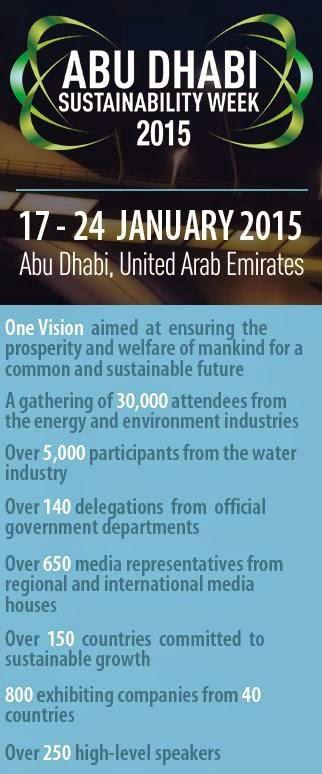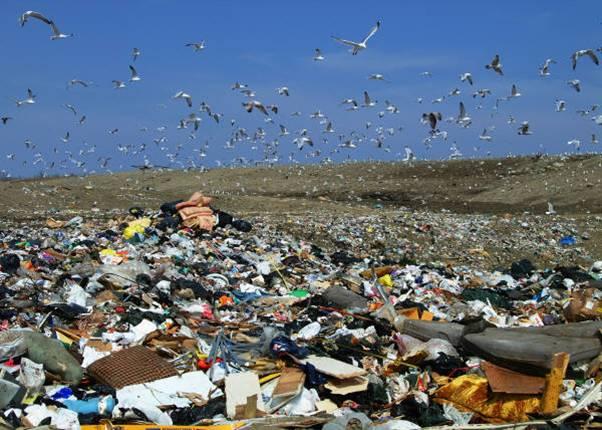Sustainability-Focused Innovation Underpins Financial Success at Alpine Waste


Editor’s Note: This is the third post in a three-part series on sustainably-focused innovation at Alpine Waste & Recycling. In case you missed it, you can read the first part here and the second part here.
By Graham Russell
Part 1 and Part 2 of this series on Alpine Waste & Recycling described how the company has used sustainability thinking to carve out a unique position as a sustainability leader in its regional market. Here we describe how this strategy has been the key factor in its rapid growth and financial success.
Although the company has not made a particular effort to actively engage its entire workforce in its sustainability initiatives outside of recycling in the workplace, it was critical for the sales group to change the way it represented the company’s services, pitching its sustainability offerings as a key selling point. According to founder and CEO John Griffith, this required a lot of work and something of a culture change. These days, sustainability is at the heart of the company’s selling proposition to potential new customers: Its Automated Sustainability Reporting or ASR system enables Alpine to quantify very precisely what it can help a new customer accomplish in environmental terms through recycling and composting.
While Alpine’s sustainability strategy does not directly involve the efforts of the majority of its staff, everyone clearly understands that sustainability is indeed the key element in the company’s marketing strategy and a source of competitive advantage. Griffith maintains this awareness across the company by disseminating information about the company’s sustainability initiatives at monthly staff meetings.
Branding itself as the “industry sustainability leader” and supporting this claim with innovative services that are demonstrably valuable to customers wishing to enhance their own sustainability programs is fundamental to Alpine’s corporate strategy. This has unquestionably enhanced its market reputation and expanded its customer base. In many ways, the company’s strategy may be compared to GE’s EcoMagination strategy or IBM’s Smarter Planet initiative, both of which seek to provide products and/or services that enable customers to resolve their own sustainability challenges (e.g. GE’s energy efficient locomotives and IBM’s use of big data to solve traffic congestion problems).
A major challenge with this type of strategy is that it is difficult to parse out the contribution to increased revenues made by market-focused sustainability initiatives such as those implemented by Alpine. It’s relatively easy to determine the electricity savings from replacing incandescent light bulbs with LEDs and to calculate a payback or internal rate of return on the upfront capital investment. Griffith acknowledges this challenge but is convinced that his market-focused sustainability strategy has been largely responsible for the impressive rebound in the company’s revenues following the introduction of ASR in 2012. He points to new customers that have specifically mentioned ASR as a major reason for switching to Alpine from other waste haulers: Regis University, Cherry Creek School District, Kroger and Charles Schwab.
Griffith has relied heavily on CFO Alek Orloff to make sure that, in meeting customer demands and opening up new market opportunities, the company’s sustainability projects have remained fiscally sound in terms of the anticipated return on investment. Orloff comments: “If a project stands on its own feet financially and stands to make a contribution to the company’s sustainability goals, we’ll do it.” He has been pleasantly surprised at how often a sustainability-focused initiative has delivered unforeseen or unquantifiable financial benefits that have enhanced its ROI.
Alpine now serves over 10,000 commercial customers including the Denver metro locations of some of the country’s largest organizations. Having built a remarkably successful company in large part through an ongoing series of customer-focused sustainability initiatives, Griffith offers the following advice to company leaders contemplating a similar strategy:
- The leadership team must drive the sustainability message at the highest level and provide strong support for implementation of programs that are agreed upon.
- Sustainability initiatives MUST be viable financially. Those that reduce efficiencies or increase costs will not survive for long.
- Don’t bite off more than the business can chew. For example, a “zero waste” strategy is probably not achievable for most companies and will probably bring discredit to the concept of waste diversion. A carefully thought out approach to recycling and composting, on the other hand, can achieve a 60-80 percent diversion rate and make a significant contribution to a company’s environmental sustainability goals.
How the United States Seal Promotes Sustainability


By Victoria Marino
What is your vision for the world?
My favorite person once said to me, “We’re doing life together." That is how I want to live my life. Every day. It’s what I envision for the world.
Unfortunately, our culture values individuality over unity, perceiving them as mutually exclusive. Joseph Campbell’s "The Power of Myth" speaks of a society that no longer attends to the inner life and lacks myths to live by. Without benchmarks or archetypal wisdom, we are rapt with consumer-driven desires. We have become perpetual receivers of information.
If we are to transform our culture into one that values togetherness while still appealing to individual interest, I believe the place to start is with a symbol. In the wake of recent revelations, I was moved to return to the origins of our country.
The Great Seal of our nation skillfully encapsulates the principles and ethics worth living by. Created as an official signature to enable the newly-founded nation to sign treaties, it sealed our vows to other nations. To design America’s emblem, Congress employed the acumen of Charles Thompson, the Secretary of the Continental Congress. A founding father, though not well known in our history, Thompson was esteemed by his peers for his integrity, fairness and quest for truth. To his peers, no one better embodied the nation’s vision or could as finely articulate it as Thompson. Pulling together the strongest elements of attempts from previous committees, Thompson’s final design amounted to a written description:
The Great Seal is a realization of Charles Thompson’s official specifications. The obverse side depicts liberty, freedom, independence, unity and peace. Thompson attached remarks describing the significance of his concept. Particularly noteworthy are the shield, the olive branch, the bundle of arrows and the scroll.
The 13 vertical stripes on the shield signify the states that united together under one government, represented by the blue above it. The shield characterizes the bidirectional relationship by illustrating the government’s simultaneous responsibility to unite and lead while recognizing the importance of the support the states provide. This interdependence generates strength.
The scroll reinforces this with E Pluribus Unum: out of many, one. The olive branch represents peace and is specifically held in the eagle’s right talon, the traditionally stronger talon. The bundle of 13 arrows denotes the power of war and strength in unity, intentionally placed in the left talon. The eagle faces the olive branch, implying the power of peace over war, but one is to not forget the power of war and the resolution of which this nation is capable.
Thompson changed his design from an ‘eagle on the wing and rising’ to ‘display’ in his final version. I take the former to mean continuous growth. Was the change to give us pause to question development? At what point is big too big? Does expansion always lead to improvement? Is bigger better? Is it sustainable? There is value in the ability to adapt, change, grow and improve. But when can we just be? On display, as Thompson’s eagle stands? Can we have a moment to follow our bliss as Joseph Campbell advises? It is not either/or, it is a balance of both.
This world does not need a revolution. We need to wake up and remember. The seal symbolizes an ethos born from a revolution that our founders valued and lived by. But many have forgotten, or don’t talk about anymore. This is a mistake. It should not be novel to desire governments and businesses to appreciate and honor those below them that serve as pillars for their existence. It isn’t radical to prefer harmony over discord and violence. It isn’t unusual to regard individuals, communities, businesses, governments and the planet as one. We need more Charles Thompsons to comprehend truth and transparency. We need symbols and philosophies and mindsets to unite us again.
The onus is on us to live lives with accountability, integrity and love. This is a reminder for you -- you the individual, you the big corporations and you the government. As I read about the Great Seal, for the first time in countless years, I felt proud to be an American -- proud that my country was founded on such a vision. I was excited to realize that all I had to do was remind you, not convince you, to do life together.
What is your vision for the world now? What do we stand for?
DEADLINE EXTENDED: Win a Trip to Abu Dhabi: Masdar's ADSW Blogging Contest


TriplePundit has been sharing news from Masdar in the United Arab Emirates and covering developments in the Gulf region with great interest over the past few years.
DEADLINE EXTENDED TO JAN 5th. ENTER NOW!
Now’s your chance to travel to Abu Dhabi to see what’s happening!As a lead-up to Abu Dhabi Sustainability Week, Jan. 17-24, 2015, Masdar is sponsoring a blogging contest called “Describe the ideal city in 2030” The winner will be invited to Abu Dhabi as VIP media to cover the week’s high-profile events. In 2014, ADSW welcomed over 32,000 participants from 170 countries to high-level panels, plenaries and events. This week in 2015 promises to be an equally exciting and busy one – and Masdar wants you to be there blogging and tweeting about all the action!
This year’s blogging contest is all about creativity and forecasting the future. Describe the ideal city in 2030.
The world’s urban centers are now firmly on the frontline of sustainability and innovation. Cities are confronted with maintaining a trajectory of economic growth, while reducing resource demand and addressing climate risk. With the rise of urbanization, the world’s cities must also offer complete communities – a place to live, work and play – while being pillars of sustainability. Creating growth, while minimizing their impact, is a tremendous opportunity for cities – they offer numerous opportunities to spur new ideas, develop more innovative technologies, strengthen industry and enhance our lifestyle. Based on what you see occurring in urban planning, along with developments in water, waste, energy, food production and transportation, what will your city look like in 2030?
We encourage you to be creative — the topics mentioned are just a few examples of ideas that could be addressed as your describe how your city will evolve the next 15 years.
The winning entry will clearly describe their ideal city by showcasing how future urban environments will operate, use fewer resources, create thriving communities, promote a healthy lifestyle, inspire new ideas and drive economic growth.
Again, creativity is the key. To Enter:
- Simply write your post
- Publish it on your blog or website and be sure to link it to this page.
- Leave a comment on that page linking back to your blog
- Do not forget to mention the Masdar Engage Blogging Contest in your post.
- If you do not have a blog, that is fine; you can send a draft to [email protected]. Qualifying posts will be posted on Masdar’s Engage page, and will be accepted until January 2, 2015, at midnight EST.
- More details on the contest’s rules are here.
The winning content will also be featured at www.masdar.ae and right here on TriplePundit.
Vancouver, BC Canada: 2030


This post is Jan Lee's entry into the 2015 Masdar Engage Blogging Contest.
The sustainable city of the future builds for tomorrow, respects the lessons of the past and harnesses the opportunities afforded by the present. For Vancouver, Canada’s most populous West Coast city, that approach has been part of its vision for years.
In 2009, when the city realized that its burgeoning metropolis would eventually exhaust the area’s natural resources, it launched its Greenest City 2020 initiative, a preliminary and bold aim at sustainability in the 21st century. The year 2030 will see a city where climate change, growth and demand will be met with smart transportation infrastructure, innovative energy use and production, and adaptable living environments that meet the needs of an inclusive society.
Water: Varied Resources for Varied Needs
For Vancouver, a city of nearly a million, water will be its most vital resource in 2030. The Vancouver Lower Mainland relies on a diverse network of reservoirs, aquifers, and glacial sources, but prioritizing water consumption will be the new challenge. The city’s network of neighborhood communities will play a role in this:
- Locally controlled rain and gray water catchment systems will feed Vancouver’s abundant parks, community gardens and private green spaces, reducing demand on potable water sources.
- A desalination facility south of the city will provide agricultural irrigation and emergency water sources during times of prolonged drought.
Green Building Codes, Shared Resources
In 2013, the City of Vancouver began introducing “green” building requirements. The use of eco-friendly construction materials and smart design will help meet the demands of Vancouver’s sustainable city building codes.
Vancouver’s community “hub” system will make it easier to supplement the city’s hydro-electric power with the use of community solar “trees” and arrays in gardens, rooftops and open spaces. Offshore and onshore wind generation will support Vancouver’s increasing population.
Neighborhood energy centers will supply community hydronic heating and can run on a number of resources, including converted sewage waste. Shared heating systems, an offshoot of a concept that once ran the city’s hospitals, reduce supply costs and down time, and can be self-funded. Passive heating and improved architectural design will reduce demand.
In neighborhood shopping areas, specially designed transparent awnings will bring relief from UV exposure, heat and rain, making commercial districts accessible in all seasons.
Eco-friendly cultural centers that recognize Vancouver’s legacy as a multicultural city would provide inviting areas for neighborhood events, festivals and gatherings.
In the downtown core, buildings will be outfitted with “air scrubbers” or tiles that absorb CO2 emissions. Greenways, attractive parklets and recycled water features will enhance and cool walking areas.
Accessible and Sustainable Transportation Options
Accessible transportation is essential in a sustainable city. Because one travel system rarely fits all needs (particularly in changing, adverse climates), there will be a well synchronized transportation network to link commuters with city and suburbs. It will include:
- Vancouver’s high-speed SkyTrain network, which uses a low-emission linear induction motor system common in MagLev propulsion. Increased services will replace the city bus system, with improved discounts for use
- Electrically or solar powered shuttles for local transportation within neighborhood regions
- A diverse network of bike routes, lanes and paths
- Neighborhood kiosks with bicycle and electrically charged accessible scooters for individuals with varying mobility needs
- Hybrid electric/solar-run vehicles and community chargers for inclement weather periods that could replace high-emission sources.
An Evolving Design
Smart, inclusive design that plans for a changing climate and evolving community will be Vancouver’s steps to a sustainable and resilient future.Image: Jan Lee
National Security Will Be Achieved Through Energy


By Michael Aper
When Arthur Schlesinger, John F. Kennedy’s assistant secretary of cultural relations, first learned of the CIA’s plan to invade Cuba, he told the young president: “At one [pen] stoke [he] would dissipate all the extraordinary goodwill which has been rising toward the new administration through the world. It would fix a malevolent image of the new administration in the minds of millions.” The great historian Schlesinger reminds us that history, in its multiplicity of influences, is also an image that imprints itself on the cultural psyche.
After the Sept. 11 attacks, it became clear that America needed to adapt to a new type of threat. Since the attacks, America has spent over $5 trillion on the wars against terrorism. Yet, areas throughout the Middle East are rife with sectarian conflict. One of the main actors has consistently been the United States, and regardless of the motives or designs, the image has been one of malevolence: America, the consumptive leviathan of the West. Terrorists leverage this negative image of America to gain support for their cause creating a major discontinuity in the global economy and driving the greatest threat to global commons.
Today, America’s vast centralized energy systems remain vulnerable to both physical and cyber attack. In 2013, a sniper attack in California disabled PG&E’s Metcalf transmission station costing the company millions of dollars. The damage caused by the attack took employees 27 days to repair.
Creating resilient, decentralized energy systems is the most proactive way to achieve long-term national security in the 21st century. Energy security offers a framework to change world perceptions and move America towards creating a more resilient economy. It presents an opportunity to embrace the development of public-private partnerships and international-interagency collaboration. At the same time, it is a cost-effective way to implement renewable energies.
The new solar photovoltaic (PV) array at Naval Air Weapons Station China Lake will provide 13.8 megawatts of electricity and meet approximately 30 percent of the installation’s annual energy needs while also reducing its energy costs by $13 million over its 20-year contract. By utilizing the ample amount of sun energy in the Mohave Desert of Southern California, the Department of Defense (DoD) lessens demand on the traditional grid. PPPs like this one decentralize American energy systems by collectively leveraging renewable power, expanding its commercial market, and establishing equitable public-private relationships. Development projects like this one will grow in the coming years as each branch of the DoD has committed to creating 1 gigawatt of renewable energy by 2025.
The DoD is the single largest consumer of energy in the United States and equally the most influential American entity in the Middle East. To fulfill its duty to the people of the United States, it must provide the essential military forces to deter conflict. Moving into the 21st century, this means creating a new paradigm for deterring conflict -- one that includes providing the necessary military forces to create peace. Pursuing energy security changes the way military forces are used as a deterrent and circulates American taxpayer money back into the domestic economy. Simultaneously, it restructures the DoD’s energy systems in a way that challenges the fundamental strategies of international terrorism.
Before 2013, no discretionary funding was officially appropriated for renewable energies. From 2005 to 2012, the DoD focused primarily on purchasing Renewable Energy Credits (RECs) to comply with EPAct of 2005. In FY 2013, the DoD allocated $1.1 billion for energy conservation and efficiency— 0.16 percent of its budget for that year. Most of the funds have been allocated for retrofits on existing buildings, including more energy efficient lighting, double-pane windows, energy management control systems and new roofs. However, the improvements must be followed through with a steady increase in renewable energy funding to power the retrofits. By sincerely pursuing sustainability, the DoD can sever its perilous ties in the Middle East and elsewhere.
After the assassination of John F. Kennedy, Arthur Schlesinger focused on the inspiring promise of the late president’s younger brother Robert. In the foreword of his brother’s book, "Profiles in Courage," the younger Kennedy closes by saying, “What happens to the country, to the world, depends on what we do with what others have left us.” The lessons learned from the international affairs of the Kennedy era reveal that military escalation, although it may deter war, is not necessarily an architect of national security.
As a combat veteran who served in Afghanistan, I believe that what happens to the country and to the world will depend on the United States realizing energy security. In my experiences on the ground working with local nationals as a bilateral planner in projects that ranged from building a school to transitioning farmers off opiate crops to food crops, I observed that the socio-political climate there is not conducive to long-term stability. The farmers that were able to transition are most likely dead or back to planting opium poppy. The school we built was probably dissembled and sold at a local bazaar. Now, I believe that the good deeds done there were not done in vain and that they will echo into the future burgeoning unforeseen hope, even in the darkest of places. However, I know that proactive measures towards national security will have the most impact here through energy security.
Image credit: Michael Aper
Michael Aper served as a combat Infantryman in the United States Army from 2007 to 2010. During his time in service he deployed to South Korea and Afghanistan. As a member of the 4th Infantry Division, his unit was one of the first to deploy during the troop surge of 2009. During the deployment, his unit conducted route clearance operations and worked alongside Afghan Nationals to improve the local economy in a remote area outside of Kandahar. Upon returning in 2010, he was honorably discharged and began college at Northern Arizona University. In 2013, he graduated Cum Laude with a Bachelor’s in Community Development and Sustainability. Today, he is pursuing his Master of Arts in Sustainability at Wake Forest University, class of 2015.
What Does the Future Hold for the Landfill Ecosystem?


You don’t have to be a tree-hugger to recognize the fact that we can’t forever continue to take raw materials out of the Earth, use a lot of energy to convert them into briefly-useful products and then pile them into huge landfills. If you understand that, then you get the gist of what sustainability is about. A sustainable future is one where nothing is wasted. Indeed, the idea of zero waste, whether we’re talking about factories or homes, has already taken root.
That means we could find ourselves in a place in the not-too-distant future, where we have no more need for landfills. While that would be a glorious achievement, there are those who could find it a hardship.
That would include those like 13-year-old Inusa Mohammed and his friend Kwesi Bido, who is a year older. The two of them spend their afternoons scrounging through the Agbogbloshie landfill in Accra, the capital city of Ghana, looking for bits of copper or electronic remnants that they might be able to exchange for a few coins. The boys will burn the plastic insulation off the wiring to collect the precious copper inside, heedless of the dangers that dwell within the toxic fumes. The dump is full of other dangers -- ranging from broken glass to exploding aerosol cans, to the ubiquitous lead that lurks inside of old and broken computer monitors as well as arsenic and mercury and other deadly toxins.
Agbogbloshie, and places like it, represent the end of the road for your old computer, cell phone or TV. Electronics recyclers here at home are often overwhelmed, especially with things like old cathode ray tube (CRT) monitors and TVs for which there is no longer a market. That means some of it gets shipped off, albeit illegally, to places like this.
Twenty years ago, this parched field used to be a lush mangrove swamp.
This scavenging provides meager earnings for the boys, who use the money for what was supposed to be free school. In a way they play the same role that some creatures do in the forest, breaking down the waste and returning it into the food chain. Trucks carry the scrap off to a port city, for which they might receive $200 for 5 tons. These materials are then reprocessed to be sent back through the economy once again as new items, only to find their way back to places like this over time.
Both electronics consumption and recycling are growing. In the state of Washington, for example, per capita generation of electronics waste grew from 5.9 pounds to 24.4 pounds (per person, per year) from 2003 to 2012. Over the same period, electronics recycling grew from 1.2 pound to 11.2 pounds per person, per year. That means that recycling as a percentage of waste generated grew from 20 percent to 46 percent. The fact that major retailers like Best Buy and Staples are taking back old items, in some cases for store credit, will certainly help increase participation.
Still, it’s a big hill to climb. Electronics waste is the fastest growing category of waste. By some estimates, only 10 percent of households recycle old electronics. But the fact that there is inherent value in many of these items will provide strong incentive to collect them. Transparency Market Research found that the electronics recycling market can be expected to grow from $9.84 billion in 2012 to $41.36 billion in 2019. That represents an increase from 48.4 million tons to around 141 million tons. Much of that growth is expected to come from Europe and Asia, though based on the data from Washington and the growing involvement of retailers, the U.S. seems to be catching up.
This could mean that Inusa and Kwesi and the thousands of others like them might have to find new ways to support themselves, but hopefully the transforming economy will provide those opportunities in ways that are safer and ultimately more beneficial. Perhaps there will come a day when the two of them will raise their families working to build a sustainable economy in Accra, and as they pass by a lush restored mangrove swamp, they can tell their children that this once used to be a dump.
Image credit: Louise Falcon: Flickr Creative Commons
RP Siegel, PE, is an author, inventor and consultant. He has written for numerous publications ranging from Huffington Post to Mechanical Engineering. He and Roger Saillant co-wrote the successful eco-thriller Vapor Trails. RP, who is a regular contributor to Triple Pundit and Justmeans, sees it as his mission to help articulate and clarify the problems and challenges confronting our planet at this time, as well as the steadily emerging list of proposed solutions. His uniquely combined engineering and humanities background help to bring both global perspective and analytical detail to bear on the questions at hand.
Follow RP Siegel on Twitter.
Transportation Logistics Trouble Wind Energy Industry


There are now more than 45,000 wind turbines in operation in the U.S., and the installed capacity continues to grow quickly. The wind energy industry is, however, experiencing logistical issues that impact the bottom line and wind energy deployment.
Although policy uncertainty continues to plague the renewable energy industry, overcoming transportation issues are a tangible way to help bolster wind energy growth by lowering costs and reducing delays.
Size of wind energy components
Wind turbine components are constantly increasing in size – more than quadrupling over the last 30 years. The modern wind turbine now produces 15 times more energy than typical turbines from 1990. The blade diameter of current models can be greater than the length of a football field. Offshore wind turbines tend to be larger than onshore turbines, with 5 megawatts of nameplate capacity.
In the case of wind turbines, bigger is better from a financial, energy production and sustainability standpoint. A recent study found that the energy to produce, transport, maintain and dispose of larger turbines isn't that much more than a smaller turbine, but the energy production is much greater. The trend towards larger components isn't likely to change, so the challenge is catering to it.
Shortage of skilled drivers
Massive turbine blades, nacelles and generators need to be transported from ports or manufacturing facilities to the wind farm construction site. With cargo running in the millions, extensive experience in hauling large loads is vital. The shortage of qualified drivers is not isolated to the wind energy industry, but it's a shortage that impacts the transportation industry and therefore many other industries.
"As the current crop of drivers grows older, there are fewer people choosing the profession," states a recent article in North American Windpower. The average age of heavy cargo drivers in 2004 was 50, according to Professional Logistics Group. With long hours and extensive time away from home, trucking companies are having trouble attracting qualified drivers to fill this void.
Domestic wind component production
Manufacturing for the wind energy industry has been shifting to the U.S., in part due to transportation challenges of increased component size. To improve competitiveness, it is ideal for production to be as close as possible to the point of delivery. In 2011, 67 percent of wind energy components for projects were sourced domestically, from over 550 facilities.
Permitting challenges
Overweight, oversized loads create unique logical issues, which may vary by state. An example of a little difference may be that a different color of flag may be required from one state to the next. Permitting requirements are not national, and efficient transportation is hindered by varying permitting rules for these large loads, boosting both the time and the cost of transportation. Streamlining the permitting process for interstate travel would help keep costs down and reduce delays, so it is being encouraged by the American Wind Energy Association.
Image Credit: Flickr/Tu
Sarah Lozanova is a regular contributor to environmental and energy publications and websites, including Mother Earth Living, Green Builder, Home Power, and Urban Farm. Her experience includes work with small-scale solar energy installations and utility-scale wind farms. She earned an MBA in sustainable management from the Presidio Graduate School and she resides in Belfast Cohousing & Ecovillage in Midcoast Maine with her husband and two children.
5 Reasons Companies Should Utilize the Cloud


By Jessica Oaks
Trends in business tend to change often and quickly, but one trend that can't be ignored is the move towards the cloud. Put simply, more and more businesses are adopting cloud-based storage and software solutions with each passing year. In fact, it is estimated that by 2015 spending on cloud storage solutions could reach $180 billion. Suffice it to say, a decentralized approach seems to be the golden ticket these days.
The question, then, isn't whether cloud-based systems will catch on – as the numbers show, they already have – but rather why are cloud-based solutions becoming the go-to for businesses large and small? And, should you be a business owner yourself, are cloud-based storage solutions right for your organization? In short, there are many reasons why companies should utilize the cloud, and yes, that includes your business. Let's take a look at why that is the case.
There are numerous benefits to adopting a cloud-based solution. Chief among them, however, are the following:
1. Security
One of the most attractive things to business owners about cloud solutions is that they are decentralized; the odds of data being compromised, corrupted, lost or manipulated in some form due to power outage, theft, hacking or other means is greatly reduced. Cloud storage solutions are so-named because information is spread out among a vast network of servers and hard drives – there is no central location where all of your information is stored and prone to attack. Of course, providers of cloud-based storage also maintain their own security measures to safeguard against such contingencies. Though there's no such thing as a flawless security solution when it comes to digital, you can greatly reduce your risk with the cloud.
2. Cost savings
In most cases, cloud-based solutions allow businesses to save substantially on IT costs, as much of the responsibility of an IT team – maintaining data, upgrading systems, looking after hardware, etc. -- is offset to a third party (in this case, the provider of the storage solution being sought). As payroll tends to be one of the most expensive outlays for any business, and costs related to information technology can quickly spiral out of control when all facets are taken into account, it's easy to see why businesses would be interested in outsourcing data storage, software upgrades, archiving and retrieval, and other related needs.
3. Flexibility
The cloud helps to streamline business practices by giving business owners increased flexibility. By enabling information retrieval across multiple devices, such as business cell phones, tablets and laptops, cloud-based storage allows for quick, easy and universal access to documents and information – perfect for the business person on the go. An employee no longer has to be in the office to have access to important and relevant business documents, and the size of his or her device (or more accurately, the storage capacity of the device) is no longer a factor in what documents can be accessed while away from the office. The cloud puts relevant information at an employee's fingertips, regardless of where they are – that is flexibility.
4. Low maintenance
Storing data in the cloud means no IT team, no servers, no hard drives, no software updates ... you get the point. To use an old-school analogy, the cloud is akin to taking all of those four-bin metal filing cabinets that used to be strewn about offices and hiring an outside contractor to store them in some remote warehouse somewhere: out of sight, out of mind, yet still there if you need it. The cloud, quite simply, is just a much easier, cleaner, more convenient way of doing things – why store data on your machines when you can store it on someone else's?
5. Sustainability
Believe it or not, utilizing the cloud isn't just a good idea because it makes using business cell phones easier – it can actually help the environment, too. Research conducted by scientists at Harvard University, in conjunction with teams at Reading University and Imperial College, found that 80 percent adoption of cloud-based email, storage and software solutions in Europe, Brazil, China, Canada and Indonesia alone could reduce energy consumption by 11.2 terawatt-hours annually – or 25 percent of the total amount of energy used by the city of London in a year – and abate 4.5 million metric tons of CO2 emissions. That's no small feat, considering this savings is achieved merely through the adoption of cloud-based solutions over centralized, local ones.
Image credit: Flickr/FutUndBeidl
Jessica Oaks is a freelance journalist who loves to cover technology news and the ways that technology makes life easier. She also blogs at FreshlyTechy.com. Check her out on Twitter @TechyJessy.
Is Your Outdated Office Technology Hurting the Environment?


By Aleks Szymanski
Outdated office technology is often left as it is, only being replaced when it finally dies or becomes utterly obsolete, as many business owners tend to avoid the cost to upgrade or change their technology.
What these businesses may not realize is that not only is this going to cost them more money in the long run, but there is also the environmental impact of outdated technology to consider.
Many businesses believe they have 'green credentials,' when in fact there is more they can do to reduce their carbon footprint.
1. Improving server rooms
Data centers and servers are the biggest offenders when it comes to IT inefficiency. There are a number of ways that a business can reduce both cost and carbon emissions by improving the efficiency of their server rooms. Most small server rooms were not designed to operate as server spaces, with configurations that compromise energy efficiency and limit upgrade options, resulting in higher carbon emissions. On average, it has been calculated that a low-range server in the U.S. generates 793 kilograms of carbon dioxide emissions per year.
Only a handful of countries -- Iceland, Norway, Sweden and Switzerland -- have extremely low CO2-per-kilowatt hour emissions in server rooms, something that we should all be aspiring to (though it is worth bearing in mind that this is partly due to their colder climates, meaning that the server room does not have to work as hard to stay cool).
One of the easiest ways to make your server room more environmentally friendly is to improve cooling. Many server rooms mix hot and cold air which reduces the effectiveness of the cooling system. You can fix this by implementing improved airflow management systems, such as airflow panels, blanking panels and server rack baffles to distribute hot air away from racks, or to prevent hot server exhaust air from circulating back to the front of the rack. Not only does this make the cooling more productive, but it also allows CRAC units to operate more efficiently.
2. Computers
More and more businesses are adopting green computing solutions for their IT environment. Switching to thin clients from traditional PCs is one of the simplest and most effective ways to achieve this. Thin clients provide a similar user experience but consume only a fraction of the energy required to run individual desktops. They use, on average, just 14 percent of the energy needed to run a PC, resulting in reduced energy consumption and CO2 emissions during use.
Thin clients also have a longer lifespan and are RoHS compliant. This means that they meet the regulation regarding the restriction of the use of certain hazardous substances in electrical and electronic equipment -- and can therefore be recycled.
Even more outdated are cathode ray tube (CRT) monitors. While there aren’t many businesses still using CRT monitors, replacing them with LCD screens will generate far less heat and consume less energy.
Bear in mind when upgrading that CRT monitors contain materials that are potentially dangerous unless treated, such as lead, barium and mercury. There are a number of facilities that will recycle these monitors free of charge, or you could donate them to charity.
3. Fax, Printers and Copiers
Reducing paper consumption in an office environment has been an upward trend, particularly since the arrival of cloud technology.
However, despite this, many offices still refuse to let go of printers, copiers and fax machines, meaning that the average office worker is still using 10,000 sheets of paper each year.
Traditional fax machines are the worst offenders. Unlike printers and copy machines, they are rarely turned off -- in fact, a single fax machine powered up 24 hours a day results in 200 kg of CO2 emission.
If your business cannot operate without fax, cloud fax is the best possible option: No paper waste, no ink, no maintenance and much lower electricity usage. Ditching traditional fax in favor of a cloud fax service saves time, money and impacts to the environment.
Millions of printer cartridges needlessly end up in landfill every year. Each cartridge becomes approximately 3 pounds of solid waste sitting in a landfill and can take up to 450 years to decompose. Businesses such as Cartridge World recycle and refill cartridges for a fraction of the cost of buying a new cartridge -- so for me, making this simple change is a no-brainer.
Summary
Even applying some of these changes are steps in the right direction to make your business more environmentally friendly.
- Conserve energy where you can by turning off equipment when not in use
- Educate your staff in ways that they can reduce energy consumption
- Recycle outdated equipment
- Upgrade to newer technology
- Reduce paper consumption
Aleks Szymanski CEO, Scrypt. Inc. has spent 10 years harnessing document exchange solutions to help organizations eliminate paper and improve business processes. Today it provides online fax services for many industries from Financial fax services to Healthcare.
Panera Bread Shares Animal Welfare Progress


In late December, Panera Bread shared its progress on reducing antibiotic use and cruel confinement for farm animals in its U.S. supply chain.
The company introduced its food policy in June, and part of that policy is being transparent and making a positive impact on the food system.
Panera owns 1,845 bakery-cafes in 45 states and in Ontario, Canada that operate under the Panera Bread, Saint Louis Bread Co. or Paradise Bakery & Cafe names.
“For years, Panera has been working closely with farmers, ranchers and experts, to learn how we can tangibly improve conditions for the farm animals in our supply chain. We’ve intentionally reduced or eliminated the use of antibiotics and confinement because we believe those are among the most critical animal welfare issues we can impact,” said Blaine Hurst, executive vice president and chief transformation and growth officer for the company.
World Animal Protection (WAP) hailed Panera’s commitment to improving animal welfare. The nonprofit provided Panera with expertise on improving animal welfare standards: “These comprehensive moves by Panera Bread set a strong example for businesses around the world,” Kara Mergl, World Animal Protection’s U.S. manager of corporate engagement, said in a statement. “Panera’s increasing use of more humane animal housing systems shows that kinder farming isn’t just possible, but crucial. We applaud the positive impact Panera’s progress will have on the lives of so many animals.”
Panera’s animal welfare progress
Sow gestation crates are about 2 feet wide, so small that pregnant pigs can only take one step forward or backward. They are commonly used on pig farms in the U.S. “Due to the duration and severity of their confinement, these pigs' suffering is among the worst of all factory-farmed animals,” the Humane Society of the U.S. stated on its website. A few years ago, Panera started to phase them out from its supply chain. In 2014, 91 percent of its pork supply came from farms that didn’t use sow gestation crates and where pigs didn’t receive any antibiotics.
Plus, the pigs are fed a vegetarian diet. By January 2015, Panera intends for its entire pork supply chain to meet those standards.
Panera made progress in 2014 across its supply chain, including beef cattle, laying hens and poultry:
- In 2014, 80 percent of the beef served by the company was grass feed, meaning it was sourced from cattle that graze in pasture.
- Over 300 million hens in North America spend their lives in small battery cages. In 2014, 18 percent of the over 70 million eggs served by Panera came from cage-free laying hens. All hens that supply shell eggs and hard-boiled eggs met the standards for 'no antibiotics ever' and vegetarian-only diet.
- In 2014, 100 percent of the chicken served in sandwiches and salads received no antibiotics.
Panera is not alone in improving animal welfare standards along its supply chain. WAP lists a number of organizations that have made similar commitments. These include the large supermarket chains Kroger and Safeway, which have committed to buying more cage-free eggs and phasing out sow gestation crates. Walmart, Costco and Trader Joe's only use cage-free eggs for their private labels, and Whole Foods doesn't sell any eggs from caged hens.
Image credit: Bobcatnorth